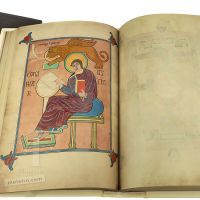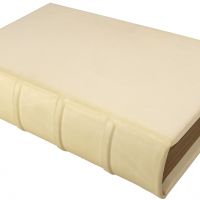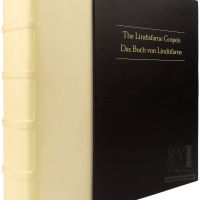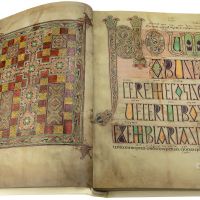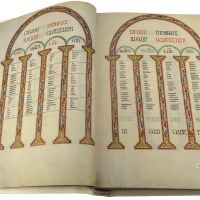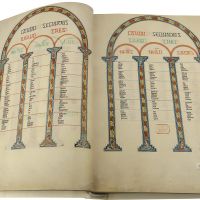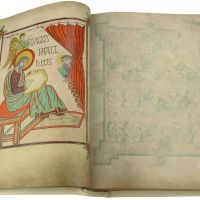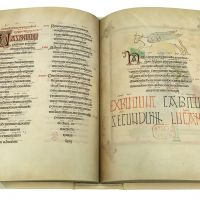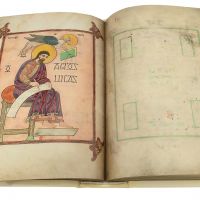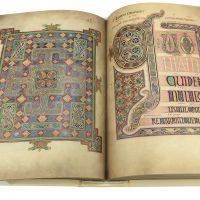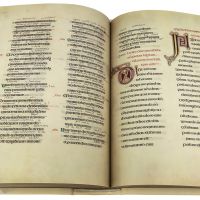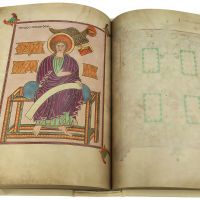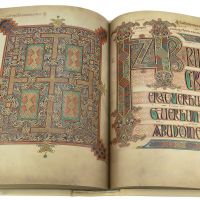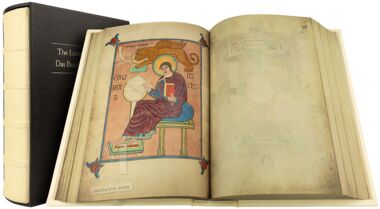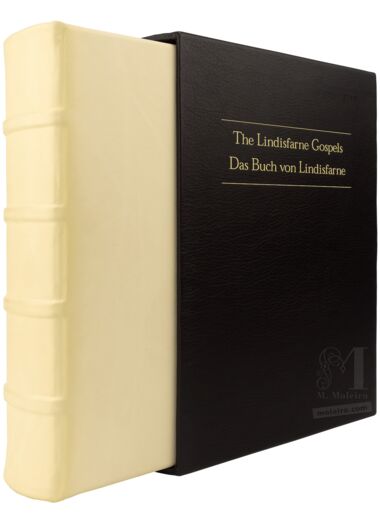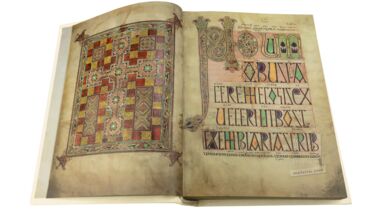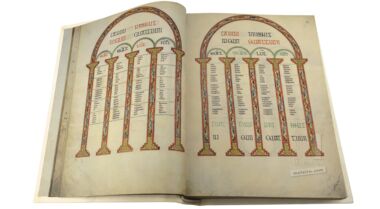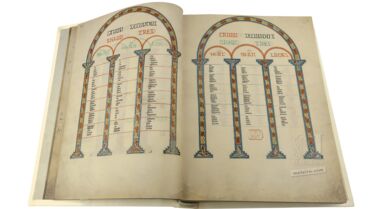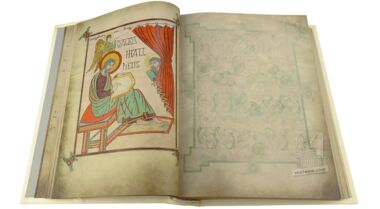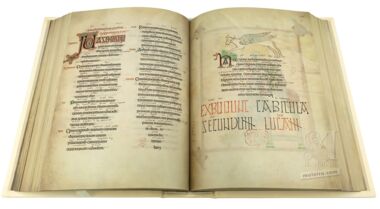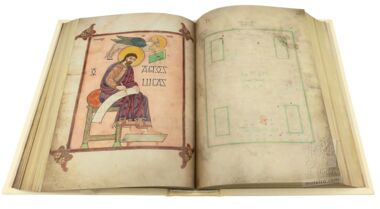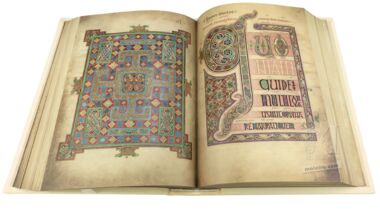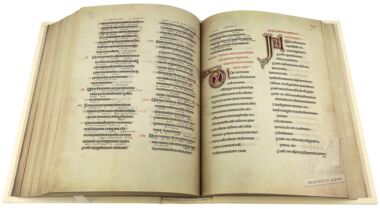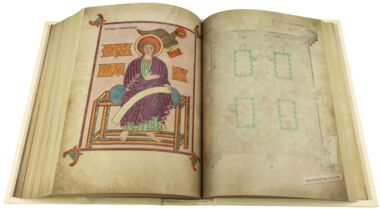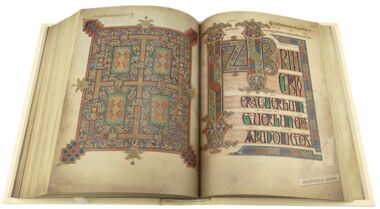Lindisfarne Gospels (Gospel-book)
British Library, London
✵ Cotton MS Nero D IV, British Library, London.
✵ Size: 350 x 250 mm.
✵ 516 pages containing 4 full-page portraits of the 4 evangelists; 5 carpet pages (full pages with decorative motifs that are usually geometric); 16 canon tables; a page with the christogram; as well as several pages with incipits and richly and beautifully decorated initials.
✵ Scholars believe that it was produced between 687 and 721 in the monastery at Lindisfarne, off the coast of Northumberland, United Kingdom.
✵ Accompanied by a two-volume study book (333 pages and 647 pages) written by Michelle P. Brown and available in a bilingual German-English edition.
✵ Limited edition of 400 copies (published in 2002), bound in white leather and protected by a fine black leather case.
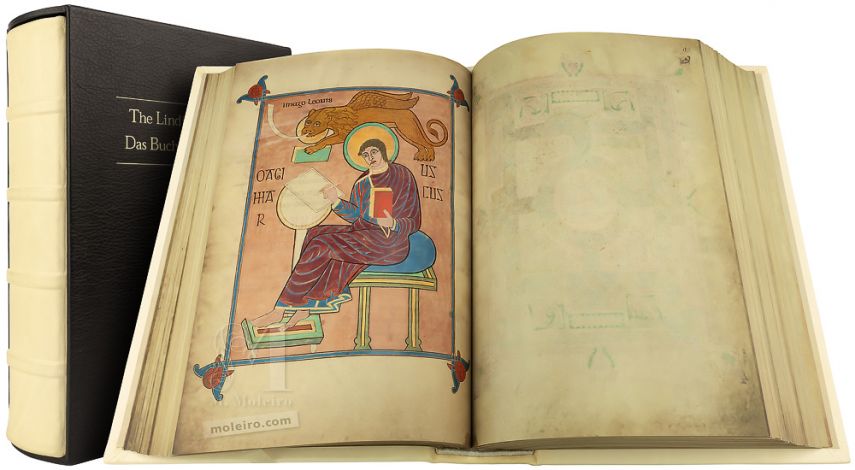
✵ Cotton MS Nero D IV, British Library, London.
✵ Size: 350 x 250 mm.
✵ 516 pages containing 4 full-page portraits of the 4 evangelists; 5 carpet pages (full pages with decorative motifs that are usually geometric); 16 canon tables; a page with the christogram; as well as several pages with incipits and richly and beautifully decorated initials.
✵ Scholars believe that it was produced between 687 and 721 in the monastery at Lindisfarne, off the coast of Northumberland, United Kingdom.
✵ Accompanied by a two-volume study book (333 pages and 647 pages) written by Michelle P. Brown and available in a bilingual German-English edition.
✵ Limited edition of 400 copies (published in 2002), bound in white leather and protected by a fine black leather case.
